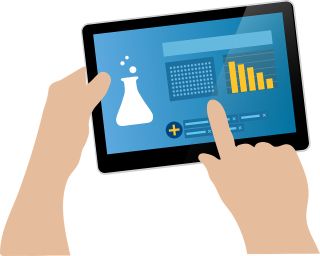Heather R. Taft has been teaching online classes with remote labs since 2014. The lead faculty member for the natural and physical science at Colorado State University Global, Taft says despite the challenges of conducting online labs, there are many upsides.
“Before the pandemic, I was really concerned about the lack of online offerings for science courses in general because so many courses were going online, and I felt like people who needed to be doing remote education were going to be picking those courses as opposed to biology,” Taft says.
With numerous higher ed institutions offering only remote classes this semester, online labs are becoming significantly more common. Despite the increasing prevalence, however, questions remain about how graduate programs will accept these offerings.
“We are not one hundred percent certain of what admission policies will be,” says Dr. Elizabeth Johnson Provost of Post University, in Waterbury, Connecticut, where labs are being offered exclusively online this semester. “We’re identifying students who are interested in going on to graduate school or medical school and asking them to hold off on their lab courses. We don’t want any of our students put at a disadvantage.”
It is hard to translate some aspects of the laboratory online, says Dr. John D. Loike, professor of biology at Touro College and author of a monthly column for The Scientist Magazine. In his advanced lab classes, he teaches skills such as culturing cells, how to grow brain cells in culture, and how to do polymerase chain reaction (PCR).
“All of these things are very hands-on,” he says. “You can watch it on YouTube, it’s okay, but it’s not the same thing.”
That’s why Loike has opted for a hybrid model in his lab this semester. He’ll have small groups of students in the lab at different times for the vital hands-on lessons, and then conduct the rest of the class remotely.
Loike sees the remote portion of the class as an opportunity to add more real-world applications to his undergraduate labs. “A lot of labs, they’re fun,” he says. “But are they really transformational? Many of them are not.”
After Loike moved his classes online mid-semester in March, he found great success teaching students the kind of real-world critical thinking science skills that are generally only taught to graduate students. He plans to duplicate that with the remote portions of his class this semester. For instance, while teaching students how to analyze scientific papers, he gave them one of his published papers.
“I say, ‘Read it, come back, and criticize it. Tell me what I did wrong.’ So I have to defend it,” Loike says.
Loike also had students look up preventive measures for COVID-19 and study why antibody tests can be as high as 30 to 40 percent inaccurate, and then asked them to analyze and draw conclusions from raw laboratory data. “[This kind of exercise] gives students a hands-on type of experience that they rarely get in undergraduate sciences,” he says.
- MIT Professor’s New Book Details Technology's Limitations in Education
- How Higher Ed is Handling Cybersecurity During COVID-19
Resources for online labs
For those teaching remote lab courses, there are a number of tools available, says Taft, who conducts online science consulting for instructors. Several companies provide lab kits that can be mailed to students. These include Hands-On Labs and eScience Labs, which both host predesigned labs on their online platforms. Another company Taft recommends, Carolina, allows professors to assemble a kit for a lab they’ve designed and then for students to purchase that kit.
Lab simulations are another option. Free simulation tools, such as PhET simulations and those found on the Howard Hughes Medical Institute’s BioInteractive, are among Taft’s preferred ones. Labster, another online resource, walks students through experiments as if they were in the laboratory or doing fieldwork. Visible Body can be used in conjunction with or instead of in-home dissections, says Taft.
In her own classes, Taft is using a combination of these resources. “[Traditional labs are often] kind of like cookbook exercises to help walk you through content that you’re learning in the course,” Taft says.
Teaching science online can also provide opportunities for more new approaches that encourage creativity, problem-solving, and critical thinking. “I’d like to see students designing their own experiments more and actually using the scientific process more,” says Taft. “That’s something I do more with graduate classes.”

